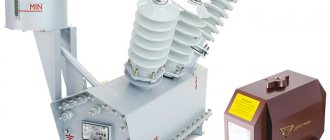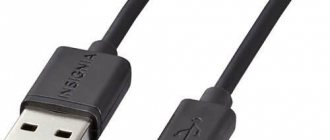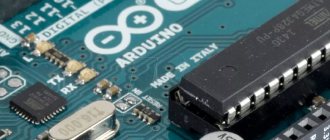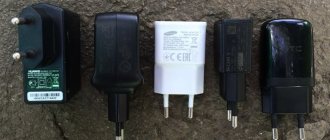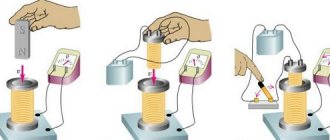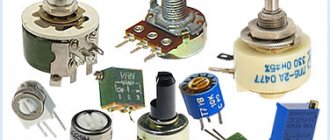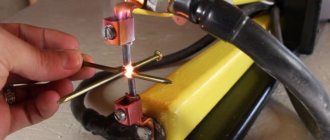To connect wires in electrical circuits, you can use special tools or compact devices, of which there is a large selection on the construction market. Let's look at how WAGO analog terminal blocks differ from Chinese ones, how they are designed and what they are used for. Read to the end and you will find out when and why it is better to use German terminals or abandon them in favor of traditional twisting.
Popular types of Vago terminals Source 220pro.ru
Where can I buy
You can purchase pads as quickly as possible at your nearest specialty store. The optimal option, in terms of price-quality ratio, remains purchasing from the AliExpress online store. Mandatory long waits for parcels from China are a thing of the past, because now many goods are in intermediate warehouses in destination countries: for example, when ordering, you can select the “Delivery from the Russian Federation” option:
| UKK 80A Din Rail Terminal Blocks | Din rail with terminal block 10 pcs. | DIN rail terminal block |
| 10pcs Black Din Rail Terminal Blocks | Terminal blocks for din rail PT-2.5 | 30/50/100 pcs. push terminal block |
Types of WAGO terminal blocks
In general, there are a huge variety of terminal blocks and they are produced not only by the WAGO brand, terminal blocks are also made by Legrand and a bunch of other third-party manufacturers, which for some reason have not taken root in Russia. China, of course, does not lag behind and fakes everything with a bang.
The main types of wago terminal blocks are 3 types:
- Reusable terminal blocks - for soft wire;
- “Disposable” with a special paste for mixing aluminum and copper (I call it solid oil-graphite);
- “Disposable” without special paste, the body of which is transparent.
On good terms, all these types are suitable for low-current, fast switching networks, powering: uninterruptible power supplies, power supplies, spotlights, assembling lighting wiring and something from the same low-power series. Well, not for power supply, input wires and power panels with sockets.
Reusable, disposable and wago terminal blocks with paste
Personal experience using the Wago terminal block
I did an experiment at home. In a junction box , which is all on an aluminum wire from the developer. Poe bit off the aluminum and assembled everything on Wago terminals.
The input wires that powered the wiring from the shield were placed on separate “vags” and lined with copper. And this is what happened:
Aluminum wire with a cross-section of 1.5 square millimeters and copper 2.5 square, through the wago terminal block. Black with a graphite-solidol thing inside. It seems like the reliability is almost durable, however.
All this is a violation of “PEU”. It worked for 3-4 years and soldering stations, vacuum cleaners, and soldering hair dryers were used with a bang, no complaints. But when I started running a washing machine from the same line, miracles began to happen. Literally, in a month, after 6-8 washes as usual. The junction box: began to sing, groan, characteristically spark and show signs of instability. Several times even the surge protector went into protection (I have it with surge protection).
The alarm for burning and sparking of the wiring on the Wago terminal blocks rang, I climbed inside and what did I see?
The darkness and trash of this junction box reflects the general standard of living)
The same wago terminal block that leaked but continued to work
Copper to aluminum connection Wago terminal block
BINGO! Everything melted to hell! The whole point is that the connection: copper with aluminum - does not heat up so much under the load of current passing through this connection. As a result, it is clear that the wago terminal blocks have been smashed into mush. Moreover, the copper wire is stuck, and the aluminum dangles like a hair. Of course, the “zero” burned out, but the phase contact also melted.
Wago or twists?
Previously, twists were used everywhere. And they still use it now because it’s more reliable. Then progress has long since stepped forward and invented for humanity - Wago TERMINAL BOARDS . Yes, not simple ones for a screwdriver and a nut with a bolt, but major ones - they are called WAGO terminal blocks and they are produced in various types. For soft and hard wire, for 2.5-4 sq.mm and for 6-8 sq.mm with and without graphite-solid grease.
The price of wago terminal blocks, after the fall of the ruble (thanks Uncle Vov), has become quite steep, but what can you do, after all, the thing is made for people. And the Chinese are great at counterfeiting it.
As a field electrician, I had the opportunity to see how in all sorts of small families, dorms and other residential premises they use twisting of all types of wires and everything. Which of course often leads to overheating and all kinds of burnt contacts, people then sit without light and call ME!
Those same twisted wires that hold all the electrics together.
In general, you should not mix different metals in electrical connections - the risk of fire is very high!
And first of all: There is no need to get involved in electricity at all if you are an amateur. It's dangerous for health.
How to use wago terminal blocks
There was also a case when I received a call from a production plant outside the city. A small workshop - a sawmill for 5 and a half Uzbeks. Their electricity was constantly cut off, although all loads did not exceed 5-6 kilowatts. And the supply wire had a reserve of 2-3 times. The power supply panel of this workshop had a 32-amp input circuit breaker (freshly installed), but it was also turned off every half hour or hour. An external examination revealed nothing. And when I already went directly into the contacts, I went nuts. The input wire is aluminum 10 squares, there is also copper 10 squares and there is a copper 3-phase jumper and all this is in one contact of the circuit breaker, of course the plastic melted and caused oxidation to everything that was happening. But look from the outside, everything is fine - a new machine, the wires are laid, no traces of burning.
This shield was defeated by a brass 3-phase closed busbar. Be that as it may, the connection with bolts, even coupled with aluminum and copper, gave a much better effect than wago terminal blocks. People are happy, the workshop is working non-stop, they called and thanked us, and asked us to rebuild another panel.
Insulated brass busbar for 3 phases for DIN rail
Conclusion on wago terminal blocks
Wago terminal blocks are a good thing, but they are contraindicated for use on power (socket) lines . Use for lighting and light loads please. Although the manufacturer stated: load retention through wago up to 4 kW. From experience I can say that this connection from the same type of wire (copper to copper) will last for 3-5 years, then the contact will begin to age and deteriorate. Therefore, emotional twists, sealed with solder without acids and aggressive fluxes, are our everything!
The contact area of the wago terminal block greatly loses twisting
wago terminal block burned out melted
Wago terminal block with grease for aluminum and copper
Melted Wago terminal connecting aluminum and copper
Assortment of original terminals for household use
Classification of analogue products is carried out according to various criteria. Products can be disposable or reusable. The first belong to the group of self-clamping terminals, which contain insulating paste inside. They are often mistakenly reused, but here, after removing the core, the amount of lubricant decreases and the contact weakens. Such connectors are used in sections of the circuit that do not require constant maintenance.
Disposable terminal block Source svet-el.com
Recommendations for Vago installation
There is no need to specifically learn how to use Vago terminal blocks; the installation process is quick and simple. It is much more important not to make a mistake in choosing and to ensure that the products comply with the parameters of the electrical circuits.
Let's look at the switching of wires using the example of transparent connecting terminals of the 773 series for 3 conductors:
- We strip the end of the wire by about 12 mm - remove the insulation.
- We insert the conductor into the socket and move it until it stops. Ideally, the end of the core without insulation should fit entirely into the housing.
- We check the reliability of the fastening by slightly pulling the wire in the opposite direction.
We also recommend reading our other material, where we told you how to choose a stripper for stripping wires. For more details, follow the link.
Transparent plastic makes it possible to verify whether the core is installed correctly.
The internal cavity of the body is filled with a special paste. This is especially valuable if aluminum conductors are used instead of copper. The paste protects them from the formation of an oxide film
There is a special hole for testing on the back of the Vaga for connecting electrical wires. Thanks to it, without opening the case, you can use an indicator screwdriver to determine the technical parameters of the circuit.
When installing removable terminals, the design of which is distinguished by the presence of a lever, it is necessary to perform a couple of additional actions:
- remove insulation;
- lift the “tongue” up;
- insert the conductor into the hole and push it all the way;
- return the lever to its place;
- visually or by slightly pulling, we check the reliability.
The 221 series terminals are the most convenient to install: the wide levers are easy to raise and lower with light finger pressure.
Usually, special marks are applied to the terminal block housings to help clean the conductors.
To ensure that the process of connecting wires goes quickly and smoothly, you need to remember a few simple rules:
Image gallery
Photo from
Junction boxes are the best place for installation
Junction box in accessible location
Wires for installation with reserve
Aluminum wires are connected via Vago
Be sure to study the passport data of the terminal blocks; the range of conductor cross-sections, maximum voltage, and number of cores are always indicated there. You also need to understand the color marking of electrical wires.
Be sure to calculate the total load of all lines that the terminal connects. In order not to exceed the rated current of the product, it is advisable to select it with a small margin.

